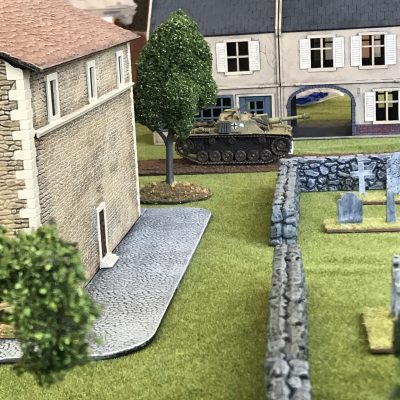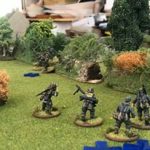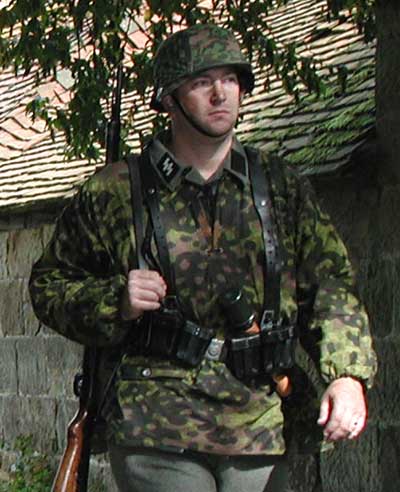Bolt Action Escalation Campaign: Game Two

By Kreighton Long
Survivors from the mornings spoiling attack march back into town under the watchful eyes of their fellow defenders. The spoiling attack succeeded in delaying the advance of the British paratroopers and more importantly, their vehicle support.
The German soldiers have a short time to rest and refit for they know the British are close behind them. Ammo pouches are restocked and a few bites of food are swallowed just in time for the officers and NCOs to rouse their men to their battle position.
The church, which is located in the center of town just as God and religion was the center of life when the town of Colline de L’église was built so many centuries ago, must be held. A German sniper in the church’s bell tower reports sighting British infantry nearing the town and the engine of a nearby assault gun roars to life.


 By Kreighton Long
By Kreighton Long